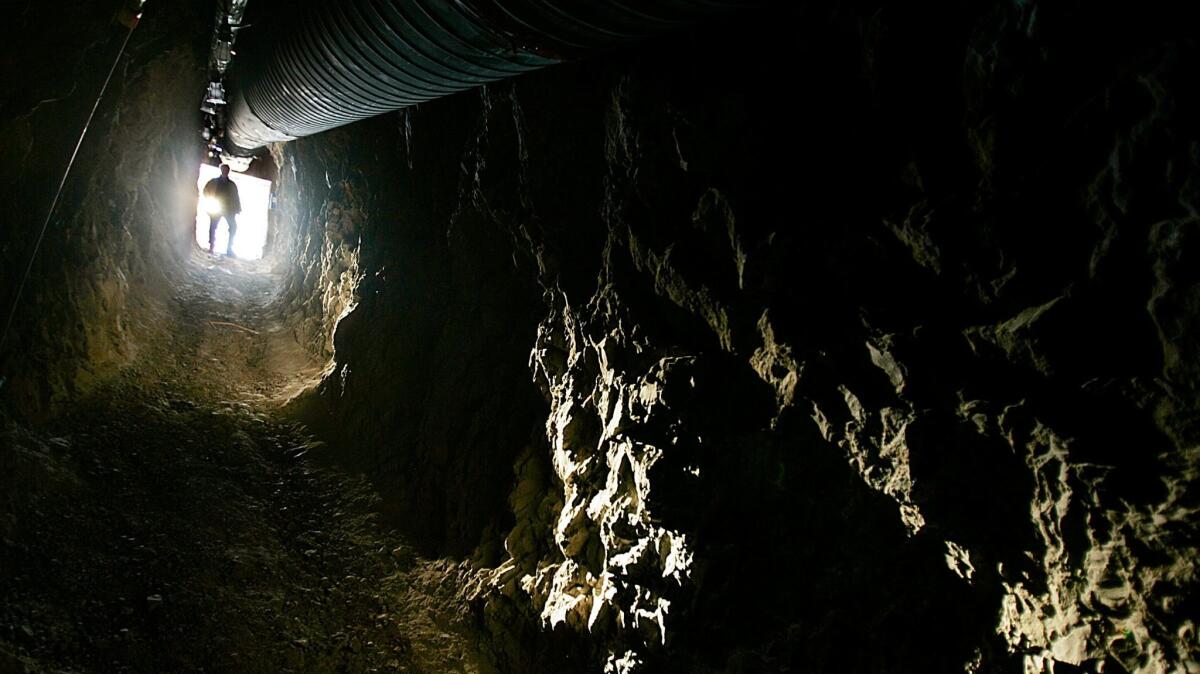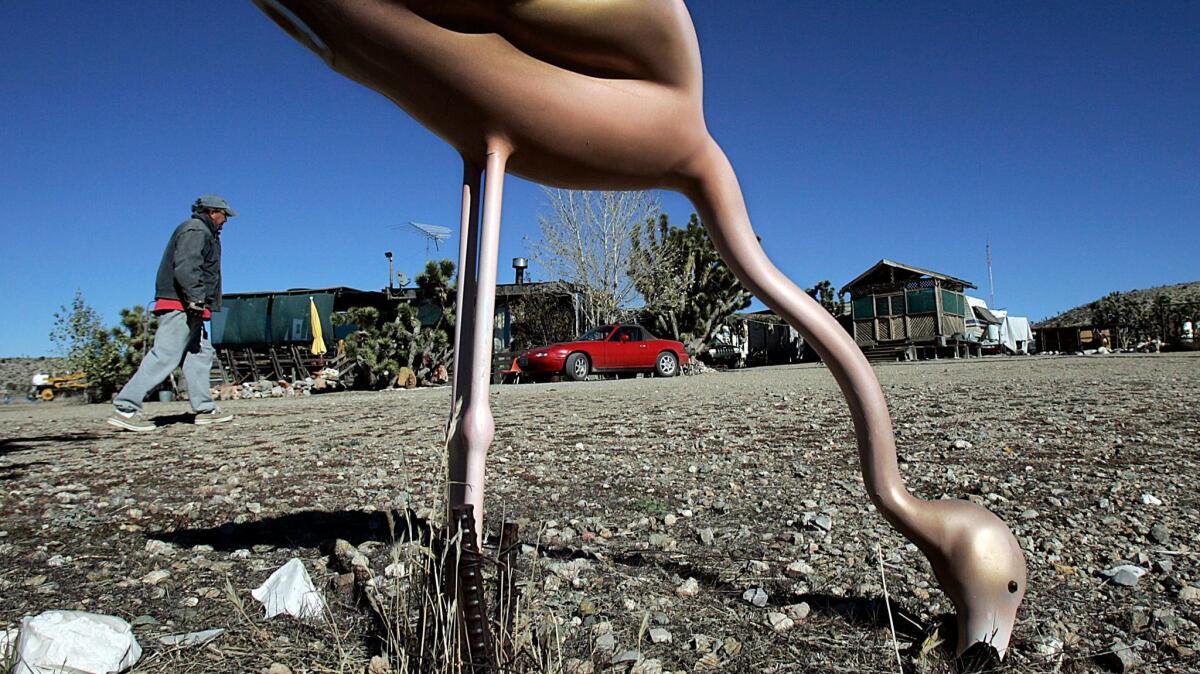Ray Dorr -- adventurer, writer and keeper of the Kokoweef legend -- dies at 88

Ray Dorr grew up listening to his uncle spin stories of the wondrous wealth beneath the earth deep in the Mojave, caverns as big as ballrooms and a fortune in gold just resting there on the banks of a swollen underground river.
But the old prospector died before he could ever find his way back to the gold he spoke about so frequently.
For Dorr, though, his uncle left behind something that may have been just as weighty: the legend of Kokoweef.
Dorr, who died Dec. 20 in Cañon City, Colo., at age 88, became the keeper of one of California’s bigger-than-life mining mysteries.
Dorr grew up in Pasadena listening to his uncle Earl’s stories of the treasure buried in the desert east of Baker. As a youth he and Earl explored the caverns near Kokoweef Peak. And as an adult, he was left to sort out whether the “lost river of gold” was still there waiting, or just a fable that had grown grander with time.
“Either Uncle Earl Dorr discovered the richest gold deposit in the United States… or he was the most imaginative liar in the state of California,” Dorr wrote in a 1967 article on Kokoweef for Argosy magazine. It was one of several articles he would write on the subject.
Though Earl Dorr’s story was filled with discrepancies, the core of the legend was straightforward:
He had learned of the hidden treasure from three brothers who had explored a subterranean maze of caves, eventually coming across an enormous limestone cavern and a wide underground river that seemed to vary in size as if guided by the tides. And there in the black sands of the river bank sparkled the placer gold.
One of the brothers, the legend goes on, toppled to his death and was swept away by the river. The remaining brothers, $57,000 richer after depositing the river gold they had quickly gathered but now too grief-stricken to press on, shared their discovery with Earl.
The prospector told his nephew and others that he retraced the brothers’ steps and found the river, which he said was nearly 300 feet wide and rose and fell as if it were breathing. When it receded, he panned and quickly found gold. And then more gold.
Afraid that others might plunder the treasure, he used dynamite to seal the entrance to the cave while he filed a mining claim. (One version is that he left the two remaining brothers inside).
The 1934 claim he filed was fantastical in its descriptions of the rocky formations he saw underground, according to a narrative of the legend on mojaveproject.org.
“One [stalactite], the largest seen, is 27 feet in diameter and hangs 1,510 feet down into a 3000 foot canyon. This great stalactite is perpetually washed by water flowing over it and falling into the dark canyon depths. The huge glistening white crystal is 500 feet longer than the Eifel [sic] Tower, and challenged us with amazement and wonder,” the narrative said.
But Earl Dorr would never find his way back.
For years, Ray Dorr sought to confirm his uncle’s story, and later to put it into perspective. He also winced as would-be prospectors and mining interests descended on Kokoweef, some setting up a shantytown of trailers, RVs and corrugated metal.
“He loved the story, but not necessarily all its byproducts,” said Dorr’s son, Mark. He said as time passed, Dorr became skeptical of his uncle’s story.

Still, the tale of fortune lost proved to be a narcotic for would-be prospectors and mining interests. Some blasted away at the hillside with dynamite. Others used more creative methods, such as lowering microphones into the crevices and listening for a pinging sound that might lead to the underground cavern. A mining partnership employed a drill as tall as a two-story housing, reasoning that when it finally hit nothing — that would be the long-lost cavern.
“Gambling’s for fools,” one prospector told The Times in a 2006 article on Kokoweef. “I don’t consider this gambling — looking for something that’s possible there. You go down in history with it.”
Dorr’s son said it pained his father to see entire families move to the margins of the Mojave and pin their hopes on finding the lost bounty.
Born April 12, 1928, in Pasadena, Dorr went on to become a general contractor and a volunteer firefighter. But the story of Kokoweef remained a passion and sparked a lifelong interest in writing about the West and adventure seeking, his son said. He traveled frequently, leading expeditions to explore other places that held mystery, such as the rumored silver and gold riches of Tayopa in Mexico.
“Rather than just talk about adventure, he did it,” his son said.
In addition to his son, Dorr is survived by daughters Leigh Ann, Jan and Kathy; six grandchildren; and five great-grandchildren. He is predeceased by his wife, Virginia.
Start your day right
Sign up for Essential California for the L.A. Times biggest news, features and recommendations in your inbox six days a week.
You may occasionally receive promotional content from the Los Angeles Times.




